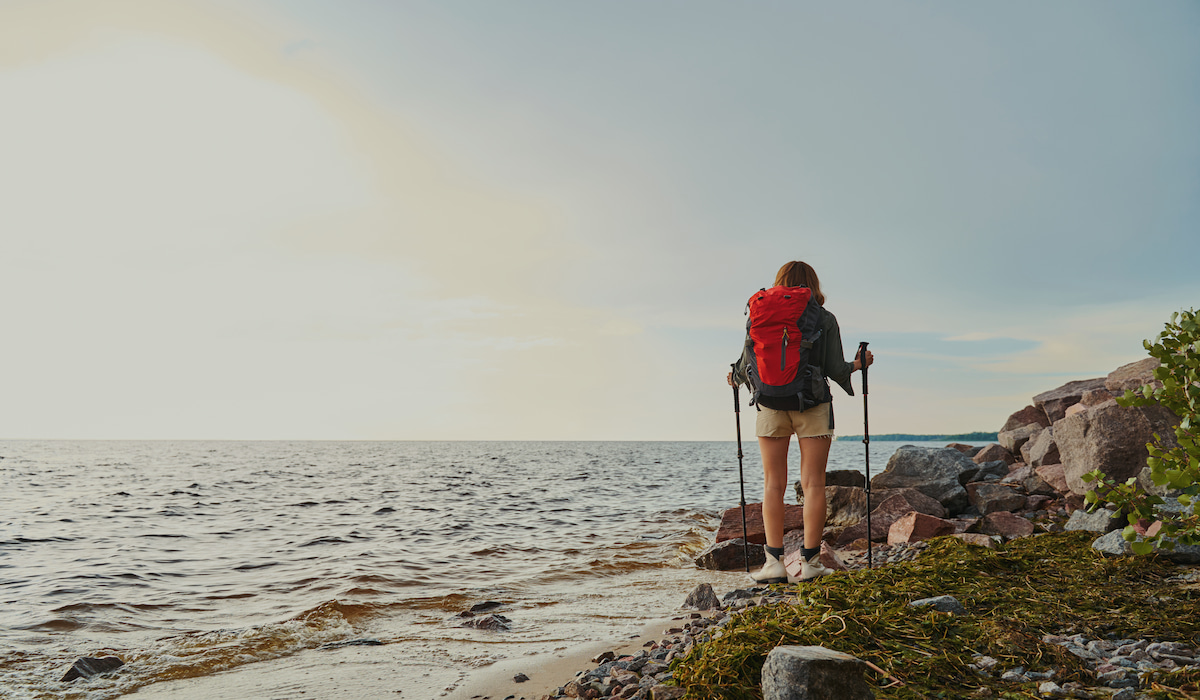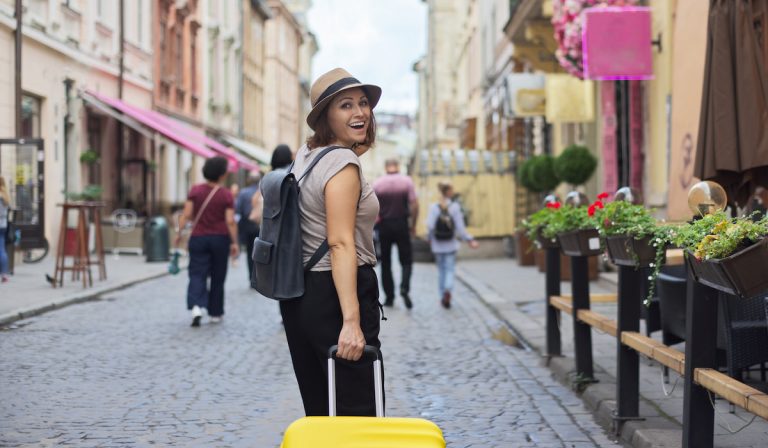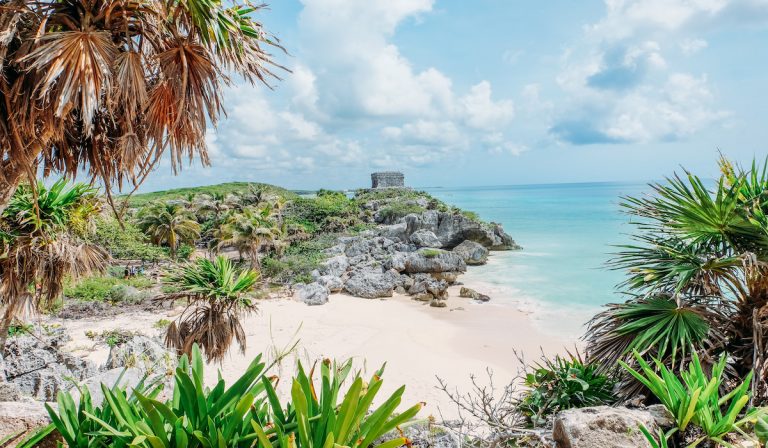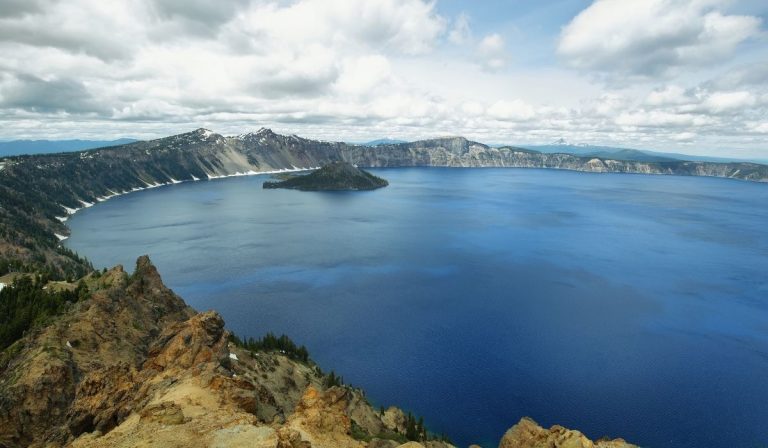Hiking Alone as a Woman (How to Stay Safe!)
Living in the mountainous American West, hiking is a go-to activity for anyone who wants to get outdoors.
With forests and mountains and even National Parks only a 20-minute drive away, it’s so easy to want to escape into the wilderness to get out of your stuffy house, get your blood moving, or just take time for yourself when you need a break.
Unfortunately, the world isn’t the safest place for women traveling alone.
We’ve all heard stories about terrible things happening when a lone woman is approached and isn’t properly prepared to defend herself.
Hiking in the woods or up mountains – as beautiful, peaceful, and quiet as it may be – puts you far away from civilization.
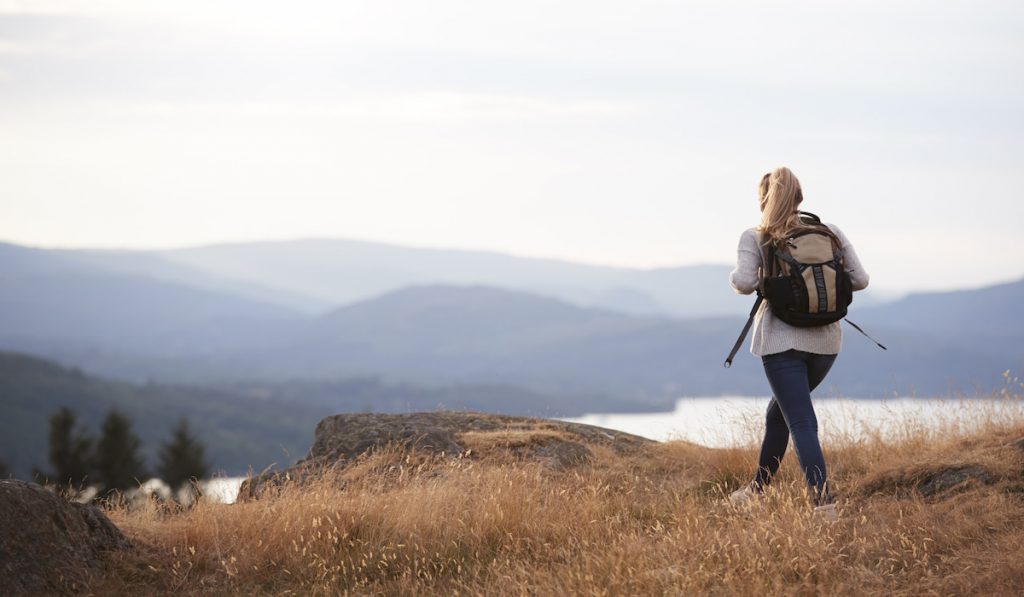
The fact of the matter is it is a good place to ambush a woman, with no one nearby to hear her scream. I know that’s very intense, but that’s the way it is sometimes.
Still, hiking is such an amazing activity, and it can be an even more amazing experience when done alone!
I don’t want you feeling like you need to hide in your home and only go out in groups for protection. I want you to be able to be independent but also confident and prepared for any emergency situation that may come your way.
So, read on to learn tips for how to stay safe as a woman hiking alone as well as reasons why hiking alone can be beneficial.
Let People Know Where You’re Going Before You Go
They don’t have to come with you – maybe you are the only one who can go at that time, or you like going on hikes by yourself, or you need to let off some steam.
But that doesn’t mean you have to hide where you’re going! Let your spouse, parents, friends, or other family know what you’re up to.
Letting a loved one know your whereabouts is essential for staying safe. Tell them in person, give them a quick call or text them and ensure they text back before you go.
Tell them:
- where you’re going (on a hike, and which hike or trailhead)
- when you’re going
- and what time you should be back by
If you don’t come back within the expected timeframe, they will text or call to see if you’re all right. (and if you are, let them know so they don’t freak out!)
If you don’t respond, they will know where you are and be able to go and look for you.
You can even tell them what you’re wearing just in case, so if they have to call the police, they will have a lot of helpful information to find you, including your clothes, where you are and what time you left.

Plan Out Your Hike in Advance
Don’t just go somewhere random on a whim – choose a trail you’re familiar with or one that you’ve researched and know what to expect.
Research the trail, the area, the landmarks, and whether there’s rough terrain, cliff edges, or rapid water nearby. You can even print out a map or download one to your phone.
Telling someone where you’re going is a good motivator for planning your hike. If you are going to tell them where you are, you’re going to need to know what hike you’ll do and how long it will take.
If your loved one knows it’s a dangerous hike, or perhaps dangerous with the current weather, they’ll be able to warn you about it, and you can choose a different hike or reconsider.
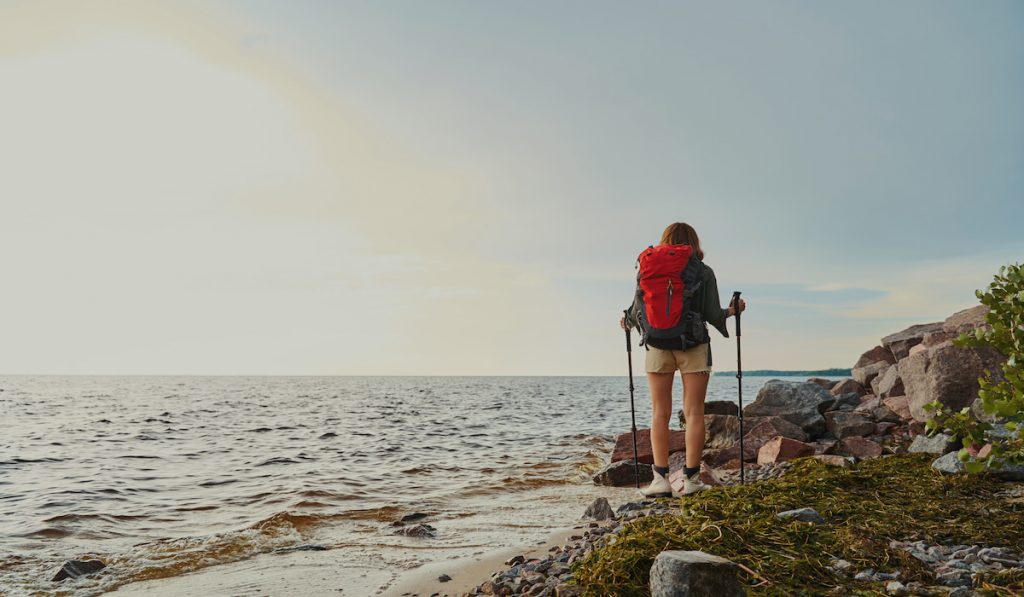
Don’t Do Any Risky Hikes
That leads to our next tip: don’t try to challenge yourself too much on your hike!
Of course, I understand if you want to push yourself – you didn’t go all the way there to mosey along on a simple hike – but don’t do anything extreme, especially when alone and especially if it’s your first time solo hiking.
Challenging climbs are best for when you’re with a group of people because you can help and support each other throughout the climb, treat each other for injuries, or go get help if it’s serious.
Hiking alone is much more dangerous because if you get hurt and you’re by yourself, no one will be there to help you or go call for help.
You may not be in cell phone range or may not be on a hike that is very popular, and there may be no one nearby for miles to help.
So, pick a hike that you know well and are confident in doing alone. Or, pick one that you have researched and know is something that is totally doable on your own.
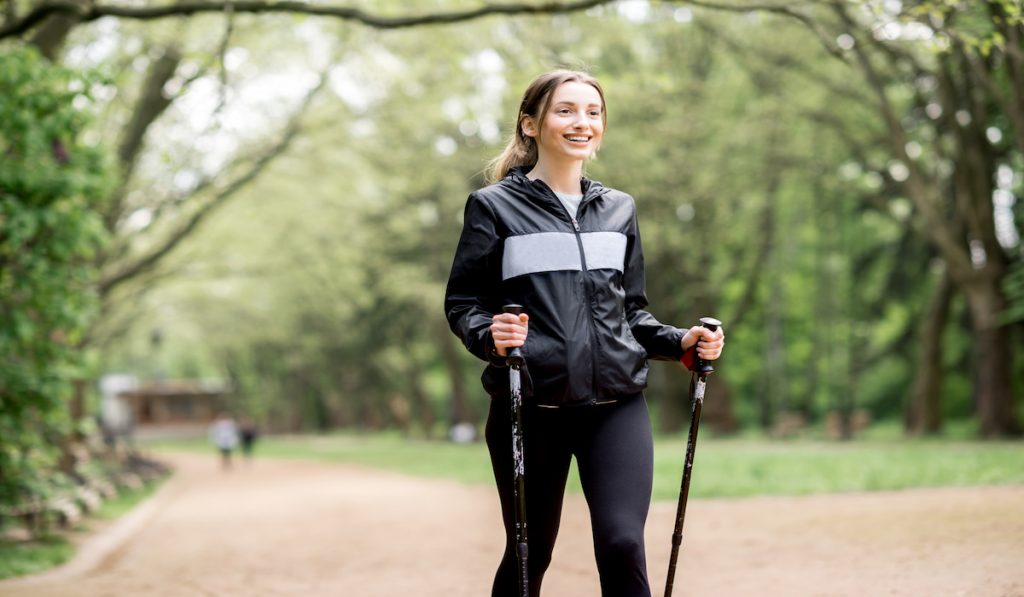
Pick a Busy Trailhead
This is probably one of the best tips for staying safe on a hike when you’re traversing solo – pick a hike that’s popular!
The trailhead doesn’t have to be crowded, but just enough traffic that you see people passing by every so often.
Choosing a trail that is clearly marked and well-traveled will make it easier to stay on the path and not get lost. The trail won’t blend into the woods as much, and trail markers will be much more obvious.
In addition, you’ll be much safer if you get lost or if you get injured or if any dangerous people come around.
Hikers are extremely kind and friendly people, and you can ask them for directions without worry. If you get injured, they will be eager to jump in and help or go get assistance.
And if anyone is making you feel threatened, you can ask to join a group or get help from others on the trail. Though it’s likely that no one will try anything in the first place if the trail is popular, as long as you stay on it in full view of passers-by!
If you feel the need to join a group out of safety, choose your group wisely. Find a group of women, or men and women, but don’t join a group that is all men.
A group of just women is best, or a family with young kids. Stick with the responsible adults and parents; they’ll keep you safe!
Don’t ever go off with just a guy or a group of guys alone, especially if you just met them. Stay smart and stay safe, ladies!
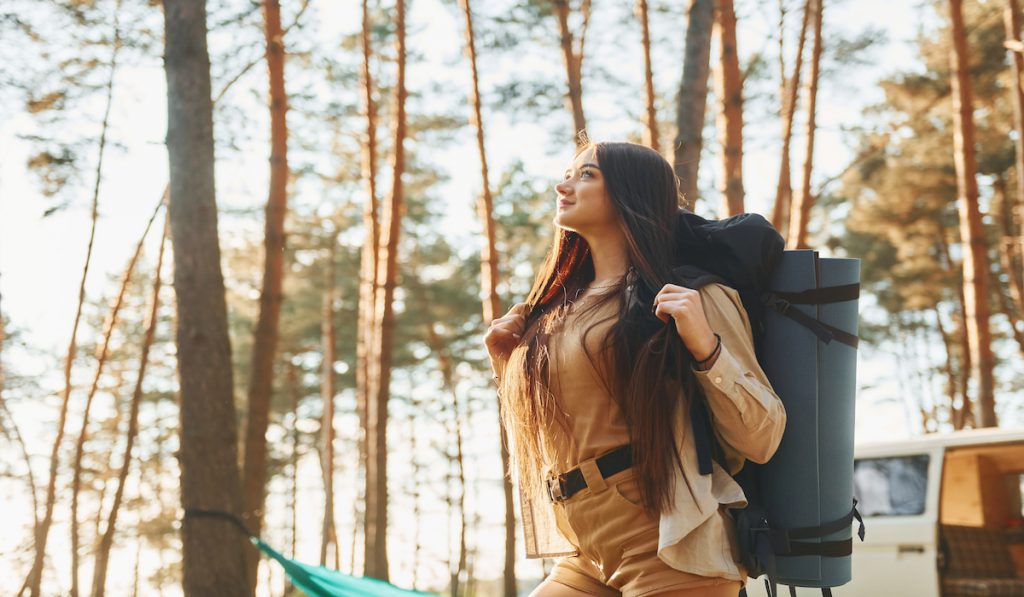
Check-in at Ranger Stations
Not able to tell a loved one before you go out? Don’t worry, you can do the next best thing. Before beginning your hike, check in with the ranger station nearest your trailhead.
Tell them your name, which hike you’re going on, how long you plan to be out hiking, and give them your number and an emergency contact number in case anything happens.
In fact, you may want to check in with the ranger station even if you’ve told a loved one! The ranger will be faster to act if you’re in danger or missing as they are already at the trail and know it well.
And yes, the rangers know the trails well. They’re a great resource if you have any questions or concerns about the trail.
You can ask rangers if they have any tips or trails that are best for safety, and if there are any dangerous situations, wildlife, or weather you should know about before deciding to start your hike.
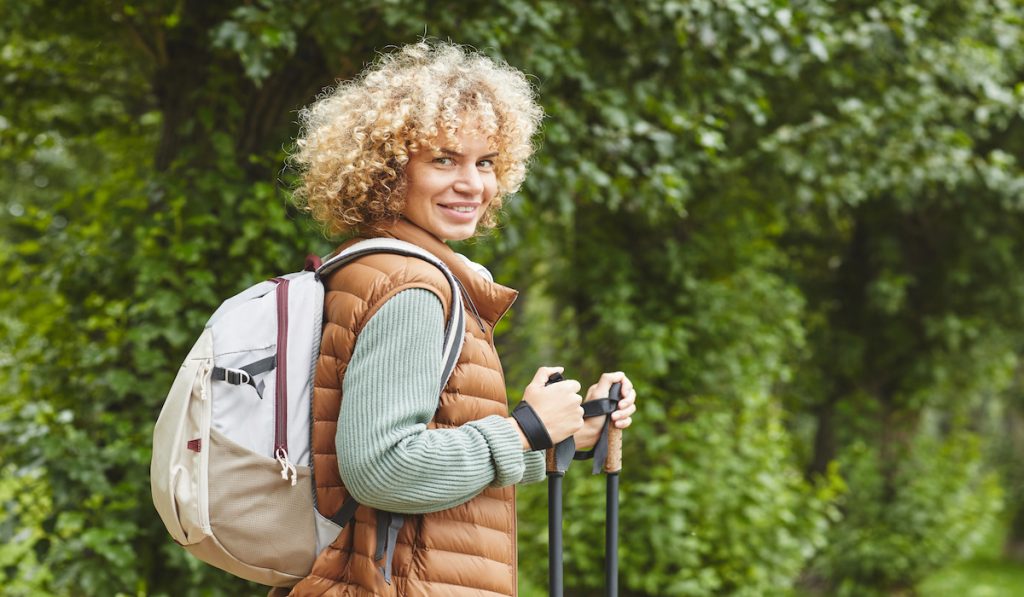
Don’t Wear Headphones
Or at least, don’t listen to music at loud volumes. Choose earbuds or headphones that are not noise-canceling, and make sure your music is not at a loud volume.
If you can’t hear what’s going on around you, you won’t be able to tell if a tree is falling behind you or if a bear’s charging at you! Or, if someone is sneaking up on you.
I understand if you want to listen to music – you’re by yourself. Are you supposed to just listen to your thoughts the whole time? Or nature sounds? Maybe, but maybe not.
So if you insist on listening to music, make sure it is at a low volume. You could also have one earbud in and one out to make sure you can hear everything around you.
Do whatever makes you feel safe and confident on the trail.
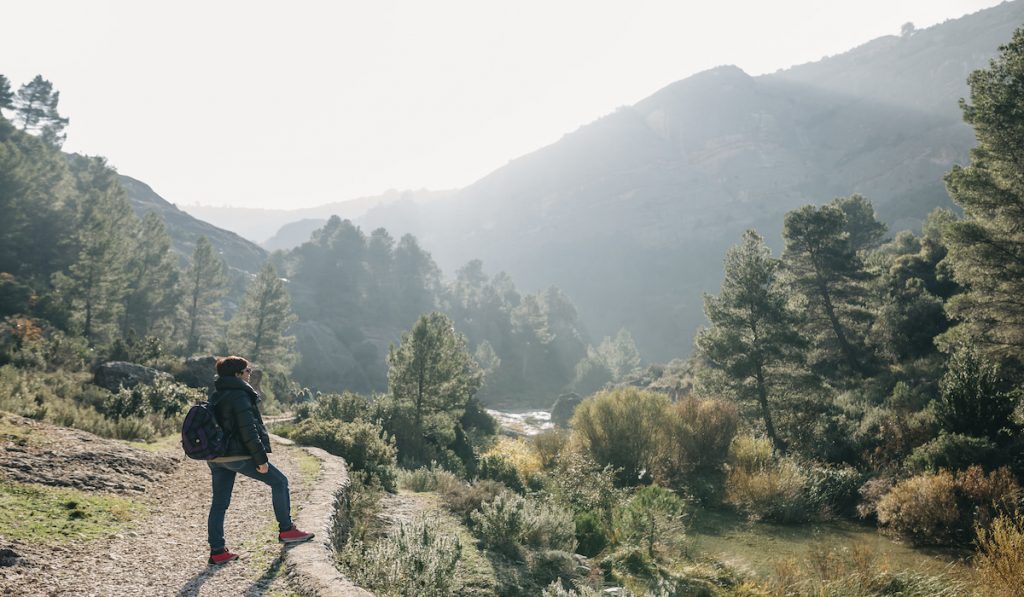
Set Out on Your Adventure Prepared
Avoiding danger is great, but there’s always a chance something could happen, even in the mildest circumstances. So, make sure you’re prepared!
Pack all of the essentials for gear. Specific items may be dependent on the hike, but overall, make sure you have a backpack containing water and food to prevent dehydration or exhaustion.
If you’re hitting the trail in the summer, ensure you have sunscreen, a sun hat, and sunglasses to protect yourself from heat exhaustion, sunburns, or being blinded by the sun and accidentally falling or hurting yourself.
If you’re hiking in colder climates, ensure you have the proper clothes and extra layers in case it gets cold or you end up being out longer than intended.
And of course, make sure you have a first aid kit with you! When hiking, someone in your group should always have one, and when hiking alone that someone is you!
When you’re assembling your first aid kit, keep in mind that most injuries on a trail happen to the ankles or the thighs. If you get injured when hiking alone, you’re gonna have to take care of yourself, so make sure you have what you need in order to do that!
Reasons to Hike Alone
It’s fun to hike as a big group and set off on an adventure. You can talk all the way up, take pictures, enjoy a picnic lunch, and make memories.
However, at times you may desperately want to go, but no one else does or is available, or maybe you really need to put some space between yourself and your life, including the people in it.
You need time to get your anger out in physical exertion, maybe relieving yourself by screaming at the top of the trail over the city below.
Or maybe you need time to think about your life, perhaps re-evaluate your priorities and passions, because your current life isn’t making you happy or fulfilling you.
Whatever the reason, ladies, there are times when we want to just go up the canyon ourselves.
Final Thoughts
Hiking is a pleasure, an exercise, a stress relief, and a chance to get in touch with nature and yourself. Hiking alone is sometimes necessary or may be preferred, and we want you to be able to do it.
Follow the tips above, and make good choices, my friends. I wish you a safe journey and happy trails!
